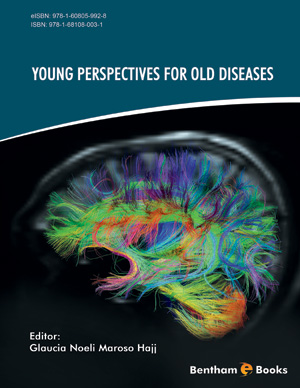Abstract
Alzheimer’s disease is the leading cause of dementia in the elderly. It is characterized by progressive memory loss and deterioration of cognitive ability, as well as by the presence of two main histopathological abnormalities in the brain: the amyloid plaques and the neurofibrillary tangles. The first is composed mainly of the aggregated form of the amyloid-beta peptide, while the latter consists of neuronal cell bodies filled with the hyperphosphorylated form of the tau protein. Although several genetic risk factors have been identified, the pathological mechanism of this disease remains elusive. As a consequence, to the present moment there is no cure to this condition or treatment capable of reliably reversing its symptoms. Hereditary forms of the disease typically have an early onset, and are predominantly associated with mutations in the molecular machinery responsible for the metabolism of a protein known as amyloidprecursor protein. In spite of the strong evidence suggesting its involvement in the pathogenesis of Alzheimer’s disease, very little of the normal physiological role of this protein or its pathway is known. A second molecular pathway involved in many cases of neurodegenerative conditions, including Alzheimer’s disease, is the cytoskeletonassociated protein tau. Tau plays an important role in biological processes like axonal transport, and much is known about the molecular mechanisms of tau dysfunction in disease. However, the precise mechanisms by which both amyloid and tau molecular signaling pathways interact in the pathology are not fully understood. As a result, the lack of a clear picture of the molecular alterations underlying this disease has represented a barrier to the development of effective treatments. In this regard, the two available options approved by the U.S. Food and Drug Administration target mostly the symptoms and provide unsatisfactory results in the long term. Many research groups in both academia and industry have focused efforts in the development of new therapies capable of reversing the cognitive impairment of patients with Alzheimer’s disease. Several of the emerging therapies had severe side effects and disappointing outcomes in terms of improving cognitive levels. However, there are some therapies that have been showing more promising results. Further studies and clinical trials are still needed to fully address the risks and benefits of new treatments in Alzheimer’s disease.
Keywords: Alzheimer’s disease, amyloid, tau, treatment, Aβ, amyloid precursor, protein, neurofibrillary tangles, amyloid plaques, neuroinflammation, memory, learning, memantine, glutamate, NMDA receptors, AMPA receptors, long-term potentiation, synaptic transmission, insulin, oxidative stress, excitotoxicity.






















